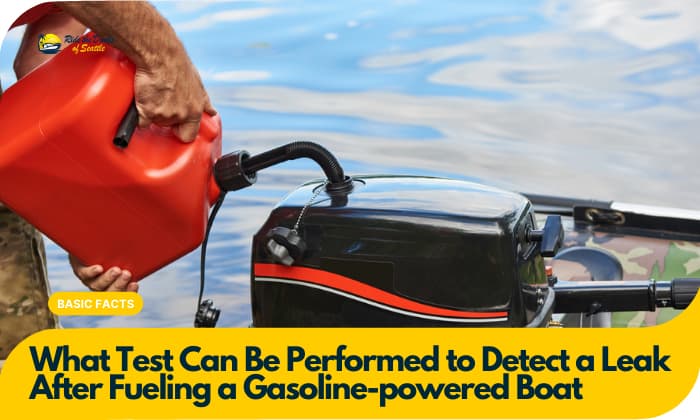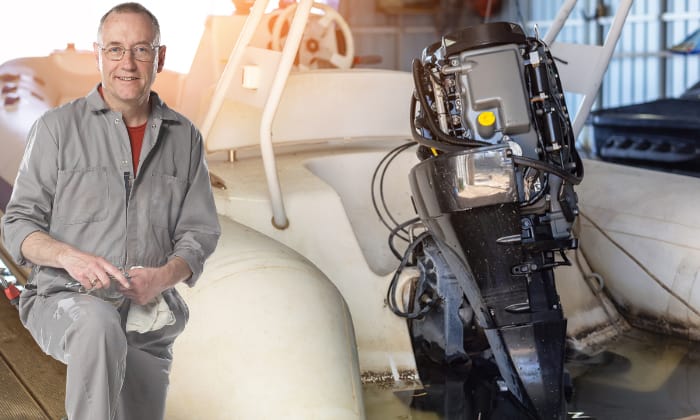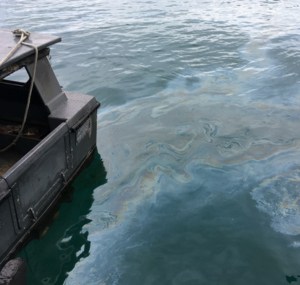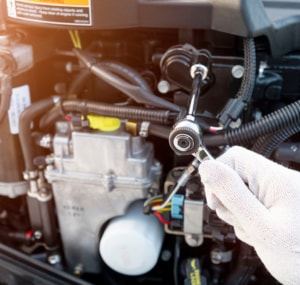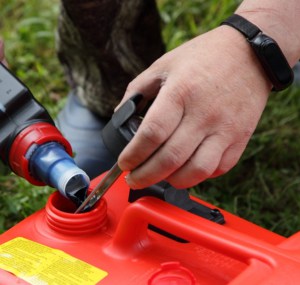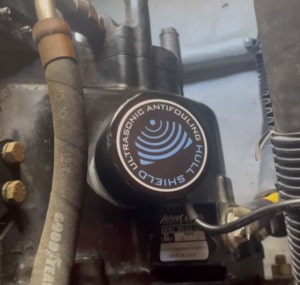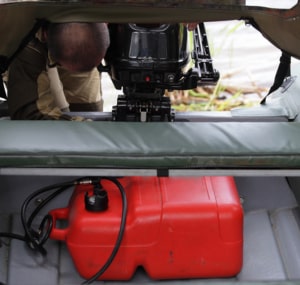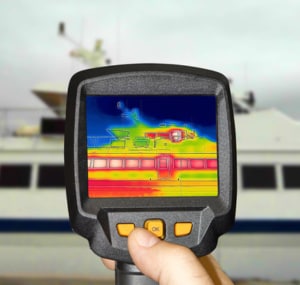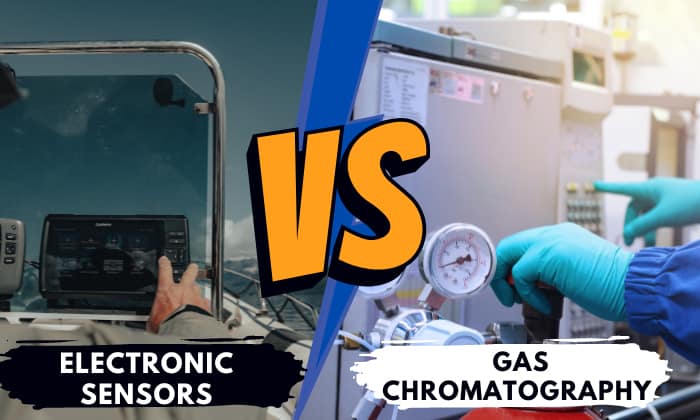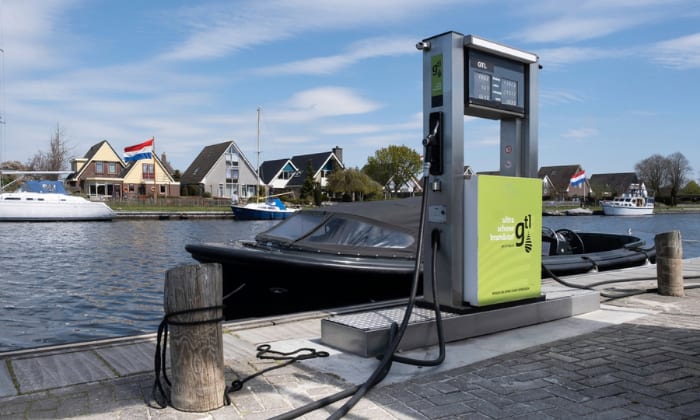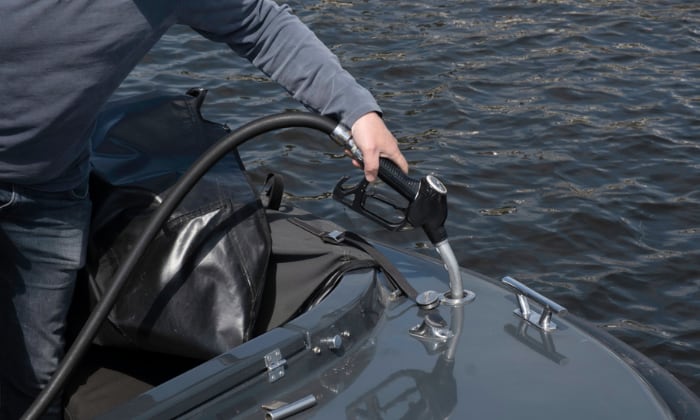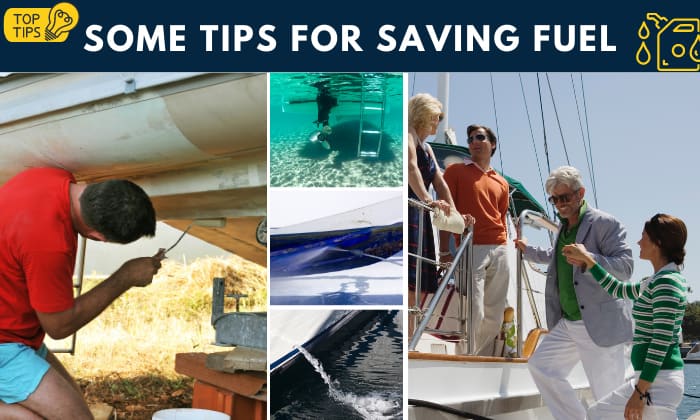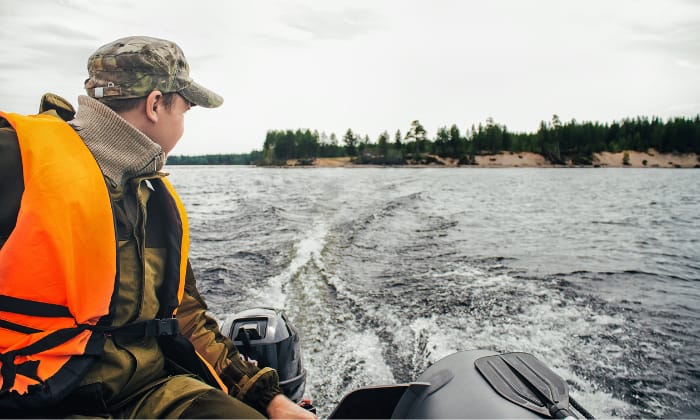Understandably, many first-time boat owners want to know what test can be performed to detect a leak after fueling a gasoline-powered boat. Experts say the sniff test remains the most practical and effective fuel leak detection method.
However, boaters must recognize that more advanced technologies can now detect fuel leaks, allowing them to safeguard their sense of smell.
Please keep reading if you’re curious about these boat fuel detection techniques.
Table of Contents
Fuel Leak Detection Tests for Modern Boaters
Many greenhorn boaters are curious about the tests or techniques that can help them detect a fuel leak on a boat. We count eight methods, which we’ll classify into three groups – traditional assessment tests, advanced testing methods, and technology-centered fuel leak detection.
Let’s examine these fuel leak detection tests in the following sections.
Traditional testing methods
Conventional fuel leak testing is straightforward and requires very minimal tools, if at all. Boaters can use their senses to determine if they see or smell signs of a gasoline leak.
1. Visual Inspection
Visually inspecting your boat for signs of fuel leaks is the easiest way. However, it doesn’t always produce the correct results. After all, gas fumes are colorless, and it would be nearly impossible to check for gas fumes with the naked eye.
You might notice a hissing sound, indicating a plausible sign of a fuel leak. Boaters should have a keen sense of hearing to localize the leak. You can thoroughly clean the boat’s fuel lines to make visual inspection easier.
Alternatively, check the bilge water for a “rainbow effect,” indicating a potential fuel leak. When petroleum products, such as gasoline or diesel fuel, come into contact with water, they create an oily film on the surface. This film can disperse light and result in a rainbow-like effect.
2. Smell Test
The “sniff test” is a boater’s lifesaver, allowing seasoned skippers to zero in on a potential fuel leak. As the name implies, this test requires the boater to “smell” the air around him.
The US Agency for Toxic Substances and Disease Registry states that about 150 chemicals comprise gasoline. Its most significant ingredient – benzene – is also highly potent. Unsurprisingly, most folks can detect gasoline in the air with a concentration of 0.25 ppm.
Hence, your nose will tell you if you have a gasoline leak in your boat. But how do you check it?
Activate the boat’s engine compartment ventilation blower for about five minutes before starting the engine. This action will help spread gasoline fumes throughout the cavity if any leaks out.
Open the engine compartment after fueling your boat and start giving your nose a complete workout. Sniff around, smelling for the tell-tale signs of gasoline fumes within the section. The scent should be more distinct after refueling, not before.
3. Dye Testing
Although the “sniff test” remains the best way to check for fuel leaks, it can be problematic in some situations. For example, the boater might have a cold, reducing his “sniffing” capabilities.
Dye testing is similar to visual inspection, except you’re adding color to gasoline to improve its visibility. Oil companies add hydrocarbon-based dyes to their petroleum products to differentiate across fuel types (i.e., petrol, unleaded, and diesel) and grades (i.e., octane levels).
However, you can add a gasoline-friendly hydrocarbon-based dye to your marine fuel. You can check this color in the boat’s fuel lines after refueling. You don’t have a fuel leak if you cannot spot this hue.
Advanced testing methods
Testing for fuel leaks in boats using sense-based techniques can produce unreliable results (except the “sniff” method). The following fuel leak detection methods offer greater accuracy.
1. Ultrasonic Testing
Here’s a testing method to help you return your offshore fueling operation to normal. When fuel leaks occur, gas fumes or liquid move from a high-pressure compartment to a low-pressure section.
The pressure differential creates a high-frequency sound (like whistling with pursed lips). Technicians use a device that “listens” to these high-frequency sounds to detect fuel leaks.
2. Pressure Testing
You’ll need a pressure tester for this trick, or you could build one. The goal is to apply 3 PSI to the fuel tank and check if the system loses pressure. You can apply soapy water on hose connections, vent ports, and other components to identify the leak’s location.
If you’re losing pressure without any sign of a leak, there’s a good chance you have a broken fuel tank (the hole must be hidden inside). We recommend hiring a professional to pressure-test the fuel tank.
3. Thermal Testing
This fuel leak detection method uses thermal imaging technologies to assess leak levels. Gas fumes emit energy no human eyes can see. Hence, capturing an image of the boat’s fuel system with a thermal camera can reveal “hotspots,” indicating a possible leak.
Emerging Technologies and Innovations
We’re down to our last two fuel leak detection methods.
- Electronic Sensors
BoatUS recommends a propane and gasoline vapor detector for boats to replace boaters in “sniffing” gas fumes. These technologies feature probes that monitor air-gas mixture and activate an alarm if they sense unusually high concentrations of combustible fumes.
- Gas Chromatography
This technique requires professionals to use a device that analyzes the gas fume composition, allowing boaters to determine if there’s a leak in their systems.
Precautionary Measures Before Refueling
Consider the following measures if you’re wondering what should you do before fueling your boat.
- Tie a line to secure the boat to a cleat or any sturdy platform on the dock.
- Turn off the vessel’s engine and switch off all electrical devices and gadgets that could create a spark and cause an onboard fire.
- If you have open flames onboard, now’s the time to extinguish them.
- Avoid smoking and using electrical gadgets, fixtures, and switches.
- Close all doors, ports, hatches, and other openings.
- Ask passengers (if any) to get off the boat before you start refueling.
The Correct Process of Refueling
An important step in the fueling process (albeit often overlooked) is ensuring you use the correct fuel type for your boat. Boaters must also determine how much fuel they need to pump into the vessel’s fuel tank. Only then can the boat owner start refueling.
- Grab the fuel hose nozzle, hold it firmly, and insert it into the fuel fill opening.
- Squeeze the lever and wait for the fuel tank to fill. Be mindful to avoid overfilling the compartment. The fuel hose should cease pumping gasoline to the tank if its sensors detect full capacity.
- Check the surroundings for signs of fuel splatter or spills and wipe them off.
- Improve boat ventilation by opening doors, ports, and hatches.
- Turn on the ventilation blower for at least four minutes before performing the “sniff test.”
- Switch on the boat’s engine and turn on all necessary electronic systems.
- Allow your passengers to board the vessel.
- Release the cable securing the vessel to the dock and prepare to cast off.
Addressing Fuel Leaks and Repairs
Tests only tell boaters if they have a possible fuel leak. The more important question is how they must address and repair the leak. Here are some suggestions.
- Determine the leak’s precise cause. For example, is it a rusty fuel filter or a worn fuel line? The leak could also be due to a hole in the fuel tank. Knowing the leak’s cause will help you identify the correct solution.
- If the problem is in the fuel hose or line, you can replace it with a new one.
- You have a few options if the problem is a leaky fuel tank.
- Use a temporary container as a remote fuel tank, pending repairs.
- Fill the fuel tank only up to the level of the leak.
- Buy a replacement fuel tank for boats.
Some Tips for Saving Fuel
Observing the correct and safe refueling practice is every boater’s responsibility. However, many would also like to learn how to save fuel. After all, leaks waste precious fuel, translating to hundreds of dollars lost annually.
- Observe a strict maintenance regimen to keep the engine in tip-top shape, including periodic oil and filter changes and other routine checks.
- Match your boat’s propellers to the manufacturer’s recommendations and perform periodic assessments for signs of deformity, wear, and damage.
- Remove barnacles, other living organisms, and other contaminants from the boat’s hull to improve its hydrodynamic efficiency by reducing friction.
- Learn your boat’s maximum weight capacity and be proactive enough never to go beyond the limit. You might want to check your passengers and gear and bring only essential items.
- Distribute weight across the boat to improve fuel efficiency.
- Empty the water from the bilges to improve the boat’s weight, reducing stress on the engine.
Frequently Asked Questions
How often should I perform leak detection tests on my gasoline-powered boat?
You can perform the “sniff test” every time you refuel your boat as part of routine checks. If you want more in-depth fuel leak testing (i.e., pressure, thermal, or ultrasonic testing), you can schedule this during annual maintenance.
Are fuel leaks in boats common?
No, fuel leaks in boats are uncommon. When they do occur, fuel leaks often indicate a serious fuel tank design flaw or the effect of wear and tear. Nevertheless, performing the “sniff test” every time you refuel can ensure a safer voyage.
Conclusion
What test can be performed to detect a leak after fueling a gasoline-powered boat? The simplest and most effective method is the “sniff test,” requiring no more than opening the engine compartment and smelling the unique scent of gasoline fumes.
You can also inspect the system visually and correlate the findings with the “sniff test” results. These methods are straightforward and don’t require additional tools or professional assistance. Any boater can execute them.

Ten years of enjoying countless trips on boats never made me love them any less! So I am here to put all those experiences into good use for other boaters who want to have a safe and fun trip with their friends and families.

